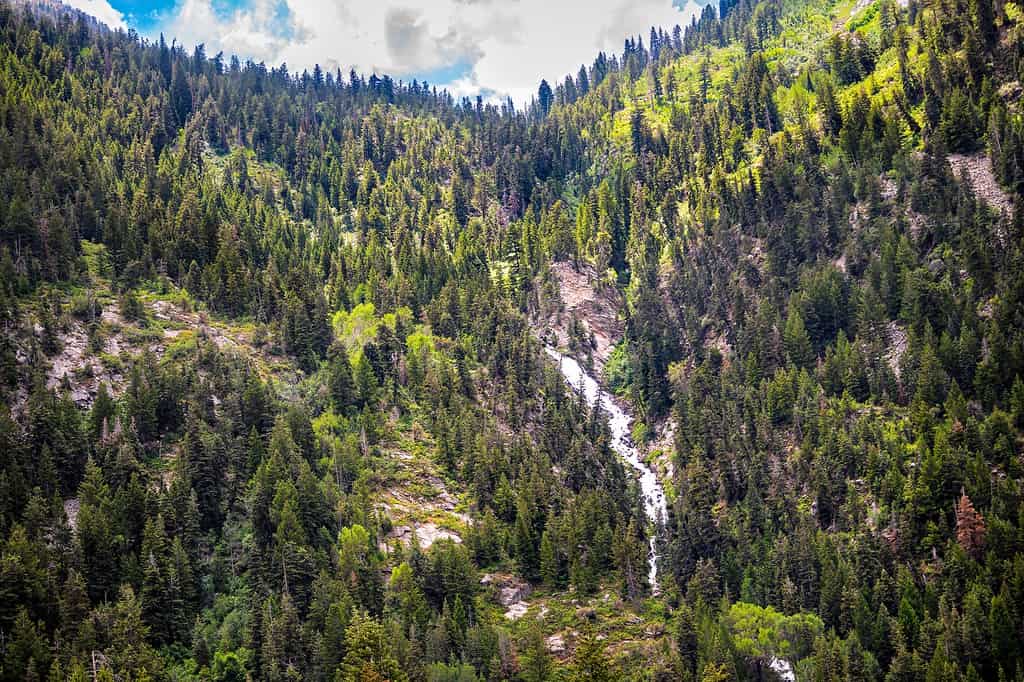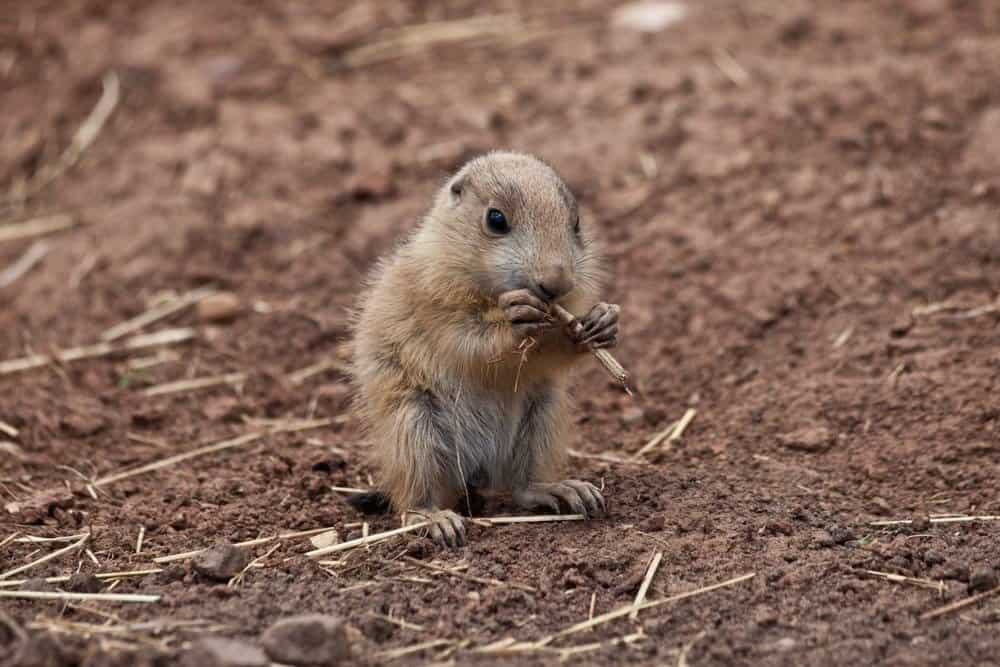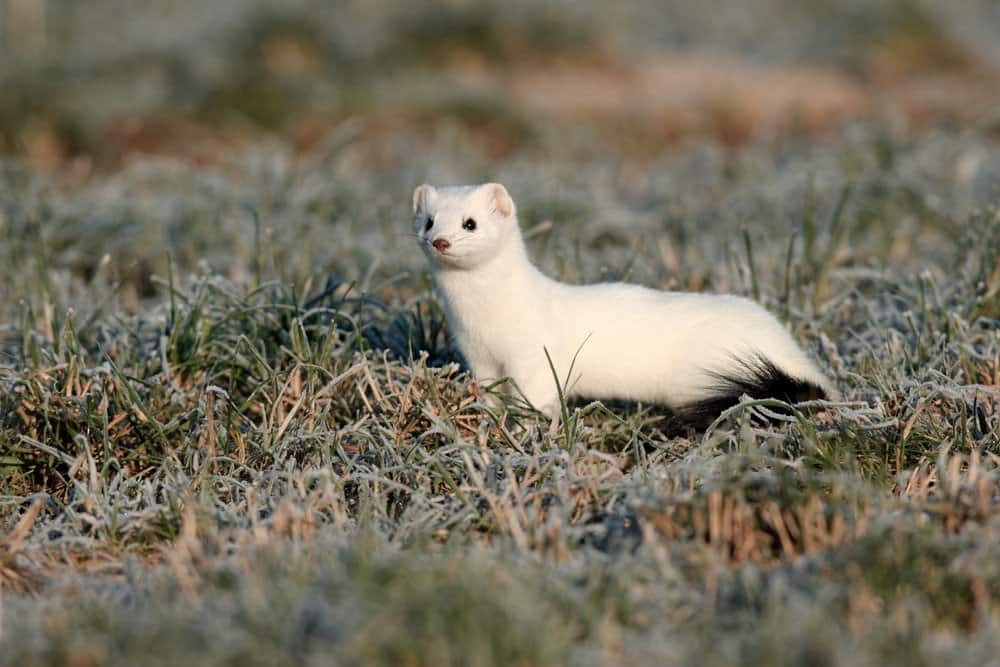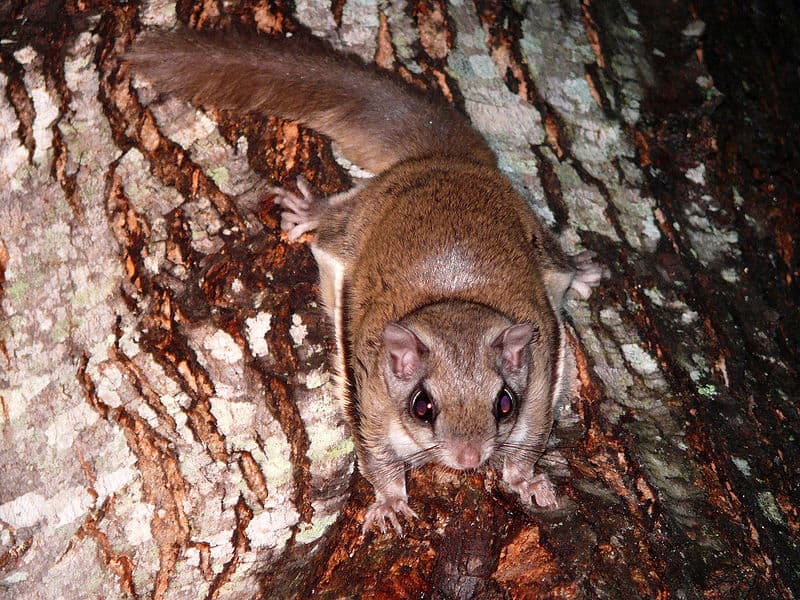As the 49th rainiest — or second least rainy — state in the United States, Utah boasts of far more hot weather and incredible scenery than precipitation. However, there is one area of the state that receives more rain than the rest by a fair bit: the town of Alta.
The Rainiest Place in Utah: Alta, in the Wasatch Mountains

Utah shares a border with Colorado, Wyoming, Nevada, Idaho, and Arizona.
©Alexander Lukatskiy/Shutterstock.com
Tucked away into the northern part of Utah, Alta is a tiny town located in the eastern portion of Salt Lake County. The town is only 4.61 miles of land with a small population, a popular ski area, and the Village at Sugarplum, a ski resort.
The town of Alta receives more precipitation in snow than in rain, but the rainfall provides 22 to 26.4 inches of rain per year. They receive another 71 inches of snow each year. The nation’s average for rain each year is 38 inches; the nation’s average for snow is 28 inches. 225 days of sunshine meet Alta, beating out the nation’s average by 20 days.
The rainiest months in Alta, Utah, are March to May. The driest month in Alta is July, with just 4.5 rainy days.
Population Size of the Rainiest Place in Utah
As of 2023, only 218 permanent residents lived in Alta, Utah. The previous census showed 386, meaning the population has had a significant decline in the past decade. A racial breakdown shows that 59.85% of the population is White, 19.19% are Native American, 15.15% are Black or African American. Other races make up the rest of the tiny town’s population. On average each year, the town welcomes somewhere around half a million visitors for the ski season.
History of Alta, Utah

Alta, Utah receives more precipitation in snow than in rain but is still the rainiest place in the state.
©Andriy Blokhin/Shutterstock.com
Founded in 1865, Alta was first home to miners of the Emma mine, the Flagstaff mine, and other silver mines in the Little Cottonwood Canyon. The wealthy mine allowed the citizens of the town to eventually sell it to British investors in 1871.
The small town captured the interest of creatives, eventually, with an incident that occurred in 1873. Apparently, a stranger came into town, offering to raise the dead. The residents initially found the idea intriguing. Eventually, they wound up collecting $2500 to persuade him to leave instead. It’s said the residents were afraid they might face problems. Past inheritances and complications thereof seemed likely if the dead members of the community could be raised. Rod Sterling read about the incident in The Salt Lake Tribune and was inspired to create an episode of The Twilight Zone based on it: “Mr. Garrity and the Graves.”
Later, a fire broke out in 1878, starting the decline of the town’s ability to support residents. In 1885, an avalanche destroyed much of the remaining original buildings and assets of the mining town. Some mining activity continued into the 20th century, however, and ultimately, in the 1930s, a single resident remained: George Watson. Watson faced significant back taxes on his mining claims, so he donated most of his land to the U.S. Forest Service. One stipulation came with the land: it had to be turned into a ski area. The first ski lift went in during 1938.
Wildlife in the Rainiest Place in Utah
In the middle of a wilderness of beauty, Alta is home to many wild animals and birds of many types. Generally speaking, where humans aren’t, animals are. Existing roads and trails will keep the environment and you safe as you explore and enjoy wildlife observation in the area.
Moose
Moose won’t be the most abundant animal you spot, most likely, but there’s a good chance you’ll catch one grazing or even bathing when you’re alone on a trail. The moose is the largest and heaviest extant species of the deer family.
Coyote
A wild species in the canine family, the coyote may be found in many parts of the USA. They’re smaller in size than wolves and tend to be less afraid of human interactions than other wild dogs. They’re also more likely to roam solo, while wolves live in packs (i.e., “lone coyote” is a thing, but “lone wolf” is not!). Generally speaking, coyotes are not too keen on interacting with humans and will run away if you make some noise.
Gila Monster

The only venomous lizard in the United States, the
Gila monster
may be found in parts of Utah.
©Vaclav Sebek/Shutterstock.com
Native to the southwestern United States, Gila monsters are large, venomous lizards that sometimes may be spotted in Utah. They’re heavy, slow-moving, and large, with black and marigold-yellow coloration. Because of their venom, they should not be touched if you spot them in the wild.
Rattlesnake
Venomous predators, rattlesnakes are often shunned by folks overall. But the snakes are an important part of the ecosystem, dealing with over-populace rodents, birds, and other creatures. They should never be approached in the wild, so if you do spot one be sure to stay as far away as possible.
Marmot

Marmots belong to the rodent family.
©Jamen Percy/Shutterstock.com
Part of the ground squirrel family, marmots are cute little rodents that nosh on vegetation in the wild. They’re particularly active in summertime, so if you’re visiting Alta during the drier months, you may just spot one hanging out on a rock or in the grasses grabbing some lunch.
Squirrel
Belonging to a family over medium-sized rodents, squirrels are also plentiful in Utah around Alta. Basically, where there are trees, there are squirrels in the USA. The scurrying little critters love to eat nuts, fruits, and other plant matter and tend to be skittish but not altogether afraid of humans. They have been known to hand-feed, even in the wild, but this should be avoided since they also may carry infectious diseases.
Deer
Pretty much everywhere in the United States, deer are abundant in Alta, the rainiest place in Utah. Mule deer are the most abundant species in the state and make for peaceful encounters. Generally, they’re skittish and fearful of humans, though, so if you manage to lock eyes, don’t blink – they’ll be gone in a second.
Fox
Technically part of the canine family, foxes are unique, omnivorous, small dog-like mammals that often may be spotted throughout Utah. With flattened skulls, upright triangular ears, pointed slightly upturned snouts, and long bushy tails, they’re extremely attractive. They’re also known to be cunning and vaguely friendly. Many folks report encounters with foxes generally being brief but fascinating. Most commonly, you’ll run into red foxes in Utah.
Stoat or Ermine

Stoats change fur colors in winter, to white, for blending in.
©Frank Fichtmueller/Shutterstock.com
Looking rather like minks, ermines, or stoats, are a fairly abundant small mammal that enjoys a happy life in the wilds of Utah around Alta. They’re similar to long-tailed weasels in looks, as well, and they are related, but different. Ermines turn white in winter, so keep an eye out for flowing, fluffy bodies in the snow.
Porcupine
Technically large rodents, porcupines are an intriguing mammal found in the rainiest place in Utah. They’re covered in sharp spines or quills, which help them protect themselves against predation. They’re generally between 18 and 23 inches tall, and weigh between 10 and 28 pounds. Their underbellies, faces, and inside of the legs are not covered in quills, but the rest of them, well, let’s just say, these little guys aren’t made for petting. They have soft, rounded noses that seem a bit “squishy” as well, and they’re overall pretty cute animals. You just don’t want to mess with them – or startle them – or you’ll wind up in a bit of pain.
Flying Squirrel
Another favorite rodent found in Utah is the flying squirrel. These mammals look like common tree squirrels from a short distance away, but if you look closely, you’ll see fur “flaps” on their arms. They open these up when they’re in trees or on posts, and then they leap to another place a bit of a distance away. The flaps on their arms allow them to glide through the air for short distances, earning them the nickname of “flying” squirrels. They’re not as easy to recognize when they’re not flying, but when they do, they’re quite the sight!

Flying Squirrels are one species of mammal you could spot in the Utahn wilderness.
©Ken Thomas – Public Domain
Cougar
Less likely to be spotted, cougars do roam the terrain of much of Utah. The large wildcats are extremely dangerous and should never be approached. They’re tan in color and blend in well with dry grasses and other dry-climate foliage. They’re not likely to be out and about when you are, but it’s always wise to be aware of their possible presence, particularly in the wilderness.
Where Is Alta Located on a Map?
Alta is located southeast of Salt Lake City. It is in an area that is attractive to outdoor enthusiasts because it has ski resorts with powder snow in the winter, and in the summer, there are hiking trails in the Albion Basin, home to Cecret Lake, streams, moose, and deer. In addition, to the north, Big Cottonwood Canyon offers lakes and scenic trails.
The photo featured at the top of this post is © Alexander Lukatskiy/Shutterstock.com
Thank you for reading! Have some feedback for us? Contact the AZ Animals editorial team.






